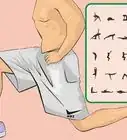This article was co-authored by Pete Cerqua. Pete Cerqua is a Certified Personal Trainer and Nutritionist. Pete is also a five-time best-selling author of books including "The 90-Second Fitness Solution" and "High Intensity Fitness Revolution for Women/Men" published by Simon and Schuster and Skyhorse Publishing. Pete has over 20 years of personal training and nutrition coaching experience and operates the 90-Second Fitness flagship studio in New York City.
There are 16 references cited in this article, which can be found at the bottom of the page.
wikiHow marks an article as reader-approved once it receives enough positive feedback. In this case, 89% of readers who voted found the article helpful, earning it our reader-approved status.
This article has been viewed 711,507 times.
If you're hoping to gain more muscle mass and strength, employ a workout strategy designed to strengthen different parts of your body and increase overall mass. You also need to have a diet geared toward bulking up your muscles, and consider taking supplements to help you get bigger, faster. Keep reading for detailed instructions.
Steps
Maintaining a Big, Strong Physique
-
1Monitor your progress. As you start gaining strength and building muscle, keep track of how much weight you gain, how much weight you can lift, and what exercises you do from week to week. This will help you figure out what works for your body and what doesn't, and keep you from getting into a workout rut.[1]
- If you find that a certain muscle group doesn't seem to be making significant gains, switch up your exercises to see if something else works better.
- Alter your diet as necessary to help you lose fat and gain muscle. Experiment with different ratios of protein, fats and carbohydrates to find a balance that helps you achieve your weight and fitness goals.
-
2Get plenty of rest. When you're in training mode, it can be hard to remember how important it is to rest between sessions. Your body needs time to repair itself after workouts. Don't push yourself too hard, or you may find yourself sitting on the couch with a pulled muscle instead of at the gym training to failure.[2]
- Sleeping well is another essential aspect of gaining mass and strength in a healthy way. Try to get seven to nine hours per day.
Doing Mass-Building Exercises
-
1Work out your legs with squats. Squats are one of the best exercises for strengthening your lower body.[3] Stand with your feet shoulder-width apart. Either use a squat rack with a barbell or hold dumbbells in your hands over each shoulder. Lean forward slightly, keeping your head back, and bend your knees until your thighs are parallel with the floor. Do not let your knees go past your toes. Slowly rise to the starting position.[4]
- Do six to eight reps and three to four sets. Rest for about 45 seconds in between sets.
-
2Strengthen your back with deadlifts. For this exercise, you may either use a Smith Machine, a barbell, or two dumbbells. Stand with your feet shoulder-width apart and, using an overhand grip, slowly lower the weight down and return it to the starting position, focusing the work on your hamstrings and lower back.[5]
- Do six to eight reps and three to four sets. Rest for about 45 seconds in between sets.
- To increase the difficulty of this exercise, bend at the waist, grasp the weights, rise to a standing position, then pull the weights up to your chest and press them over your head. Lower them back to your chest, then lower them to your sides, bend at the waist and rest them back on the floor.
-
3Get bigger arms with pull-ups and chin-ups. Place your hands on a fixed bar. For pull-ups, have your palms facing away from you;[6] for chin-ups, have your palms facing you. Lift your body with your legs crossed behind you until your chin is higher than the bar, then slowly lower your body back to the starting position.
- Do six to eight reps and three to four sets. Rest for about 45 seconds in between sets.
- To increase the difficulty of this exercise, wear a weighted belt around your waist. Increase the weight as you gain strength.
-
4Do bench presses to make your chest bigger.[7] Lay on an exercise bench with your feet flat on the floor. Hold a barbell or two dumbbells in resting position at your chest. Press the weights over your head, extending your arms and straightening your elbows. Lower the weights back to your chest.[8]
- Do six to eight reps and three to four sets. Rest for about 45 seconds in between sets.
Using an Effective Workout Strategy
-
1Weight train two or three times a week. When your goal is to increase muscle mass and strength, training every day is counterproductive. Your muscles need a chance to repair themselves in between training sessions. Without adequate rest periods, you won't achieve the body mass you want.[9]
- On the days when you aren't weight training, you can still be physically active. Do cardio workouts such as jogging, swimming, biking, or even power walking to keep yourself moving.
-
2Make your training sessions short. There's no need to train for hours at a time — in fact, if you train for too long, you risk damaging your muscles, which can lead to a forced rest period. Your sessions should last from 1/2 hour to an hour.
-
3Train different muscle groups on different days. Rather than training your entire body during each session, it's a good idea to split up your muscle groups so that some parts of your body have time to rest while others are getting a workout. Create a training schedule and stick to it, so you don't accidentally overtrain a certain muscle group.[10]
-
4Train to failure. Bodybuilders have found that training in short, intense sessions leads to greater mass and strength than easier, longer sessions. "Training to failure" means doing an exercise until you can't physically repeat it one more time. You'll need to find the appropriate train to failure weight for each of your muscle groups to do this effectively.
- To find your train to failure weight, choose a weight you can use for six to eight reps before your muscles give out. If you can do 10 reps without breaking a sweat or feeling too fatigued, you need to add weight. If you can't even do one or two reps correctly, reduce the weight.
- Attempting to lift too much weight before you've gotten strong enough to lift it can damage your muscles, and it's also counterproductive. Start with your appropriate train to failure weight and give your muscles time to build strength. Soon you'll find that the weight you've been using has become easy; when that happens, increase the weight by 5 or 10 pounds until you're back to the six to eight rep sweet spot.
-
5Use the right training form. Another essential aspect of gaining strength and muscle is using the right form. If you don't, you'll risk injuring your muscles, and you also won't be training as effectively as you could be. Consider working with a personal trainer to learn good technique and keep these pointers in mind during your training sessions:[11]
- You should be able to complete each exercise using the right technique. If you can't press your dumbbells over your head with your arms fully extended, for example, then you should probably be using less weight.
- Another option for difficult exercises is to begin with a reduced range of motion. Gradually increase your range of motion until you are able to complete the exercise's full range of motion. Do not increase the amount of weight you use until you are able to do this.
- Don't use momentum to swing your weights into place. Lift with controlled, steady movements. Lower weights back to their starting position slowly rather than letting them drop.
- Slowing down the eccentric (downward) portion of an exercise can help build muscle.
Eating a Diet that Promotes Muscle Strength
-
1Eat a lot of protein. Muscles need protein to get big and strong, and when you're working on building them up every week, you'll have to fuel them with a lot of protein-heavy food.[12] Be creative with your protein sources; not all of your fuel has to come from meat.[13]
- Chicken, fish, lean beef, lean pork and other meat products are excellent sources of protein. Other animal products like chicken or duck eggs are also good choices.
- Almonds, walnuts, legumes, and other vegetables also contain protein.
- Soy products like tofu can also contribute to your protein intake.
-
2Get your calories from healthy sources. Eating food that causes your body to produce fat will help you look big, but not strong. You want to decrease the layer of fat between your muscles and skin so your hard work becomes more visible.[14]
- Avoid eating fried foods, snack foods, fast food, and other high-calorie, low-nutrition food sources.
- Eat plenty of fruits, vegetables, whole grains, and other sources of healthy calories.
-
3Supplement your diet. Many bodybuilders help the process along by supplementing with a variety of different muscle-building products.[15] Creatine supplements are a popular choice that has been shown to build muscles without bad side effects.[16] The supplements are available in powdered form and should be taken 30 to 60 minutes before workouts for the maximum benefits.
- Avoid supplements purporting to help you gain a certain amount of weight within a certain time period. Everyone's body is different, and products claiming to have magical muscle-building properties are probably a scam.
Expert Q&A
-
QuestionHow can I increase my muscular strength at home?
 Pete CerquaPete Cerqua is a Certified Personal Trainer and Nutritionist. Pete is also a five-time best-selling author of books including "The 90-Second Fitness Solution" and "High Intensity Fitness Revolution for Women/Men" published by Simon and Schuster and Skyhorse Publishing. Pete has over 20 years of personal training and nutrition coaching experience and operates the 90-Second Fitness flagship studio in New York City.
Pete CerquaPete Cerqua is a Certified Personal Trainer and Nutritionist. Pete is also a five-time best-selling author of books including "The 90-Second Fitness Solution" and "High Intensity Fitness Revolution for Women/Men" published by Simon and Schuster and Skyhorse Publishing. Pete has over 20 years of personal training and nutrition coaching experience and operates the 90-Second Fitness flagship studio in New York City.
Certified Personal Trainer & Nutritionist Push-ups, squats, and planks are all great exercises you can do at home, and they don't require any special equipment.
Push-ups, squats, and planks are all great exercises you can do at home, and they don't require any special equipment. -
QuestionHow many reps should I do to build strength?
 Michele DolanMichele Dolan is a BCRPA certified Personal Trainer in British Columbia. She has been a personal trainer and fitness instructor since 2002.
Michele DolanMichele Dolan is a BCRPA certified Personal Trainer in British Columbia. She has been a personal trainer and fitness instructor since 2002.
Certified Fitness Trainer Building strength generally requires sets with fewer reps but extremely heavy weight. Try 3-6 sets of 6-8 reps at very heavy resistance to build strength.
Building strength generally requires sets with fewer reps but extremely heavy weight. Try 3-6 sets of 6-8 reps at very heavy resistance to build strength. -
QuestionHow much muscle can you gain in one month?
 Michele DolanMichele Dolan is a BCRPA certified Personal Trainer in British Columbia. She has been a personal trainer and fitness instructor since 2002.
Michele DolanMichele Dolan is a BCRPA certified Personal Trainer in British Columbia. She has been a personal trainer and fitness instructor since 2002.
Certified Fitness Trainer In a month, depending on where your physique starts, you can see differences in the way your clothes fit and possibly some new tone or definition if you are very thin.
In a month, depending on where your physique starts, you can see differences in the way your clothes fit and possibly some new tone or definition if you are very thin.
References
- ↑ https://www.nifs.org/blog/7-reasons-to-track-your-fitness-progress
- ↑ https://www.telegraph.co.uk/health-fitness/body/build-muscle-quickly/
- ↑ Pete Cerqua. Certified Personal Trainer & Nutritionist. Expert Interview. [14 May 2020].
- ↑ https://www.webmd.com/men/features/strength-training-building-leg-muscles
- ↑ https://www.muscleandfitness.com/workouts/back-exercises/build-bigger-back-deadlift
- ↑ https://stronglifts.com/pullups/
- ↑ https://sea.askmen.com/fitness-workouts/2918/article/bench-press-workouts-for-a-bigger-chest
- ↑ Pete Cerqua. Certified Personal Trainer & Nutritionist. Expert Interview. [14 May 2020].
- ↑ Pete Cerqua. Certified Personal Trainer & Nutritionist. Expert Interview. [14 May 2020].
- ↑ https://vitals.lifehacker.com/should-i-do-full-body-workouts-or-work-one-muscle-grou-1785371687
- ↑ https://www.mayoclinic.org/healthy-lifestyle/fitness/in-depth/weight-training/art-20045842
- ↑ Pete Cerqua. Certified Personal Trainer & Nutritionist. Expert Interview. [14 May 2020].
- ↑ https://www.eatright.org/fitness/training-and-recovery/building-muscle/strength-building-and-muscle-mass
- ↑ https://www.thisisinsider.com/how-to-eat-for-muscle-growth-2017-11
- ↑ https://www.popsci.com/supplements-help-build-muscle
- ↑ https://www.artofmanliness.com/articles/a-primer-on-muscle-building-supplements-which-work-and-which-dont/
- ↑ Pete Cerqua. Certified Personal Trainer & Nutritionist. Expert Interview. [14 May 2020].
- https://www.webmd.com/fitness-exercise/features/will-eating-more-protein-help-your-body-gain-muscle-faster#2
- Videos provided by Weight Gain Network
- http://www.webmd.com/fitness-exercise/features/build-muscle-better-health
About This Article
If you want to gain more muscle mass, train your legs by performing squats and strengthen your back muscles with deadlifts. To work on your arms, try doing pul-ups or chin-ups. For best results in building muscle, train 2-3 times a week so your muscles have time to recover in between. Rather than training your entire body in each session, focus on muscle groups to allow your muscles to rest. Finally, make sure you can perform each exercise with the right technique by reducing the weights you use if necessary. For tips on how to eat a diet that promotes muscle growth, read on!

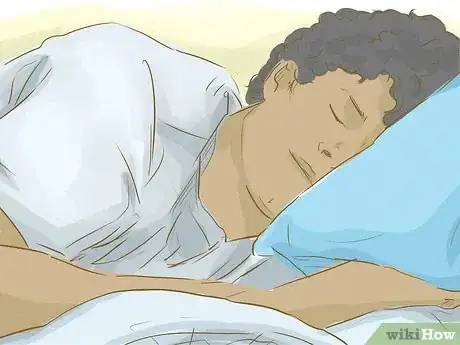
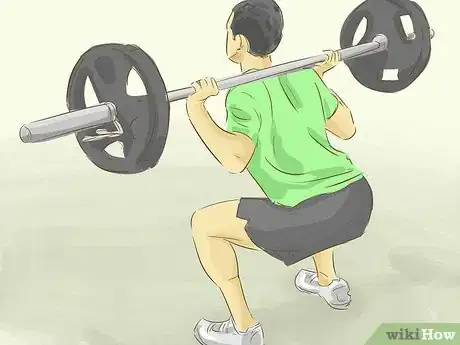







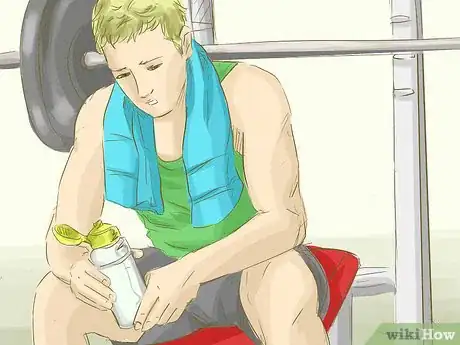







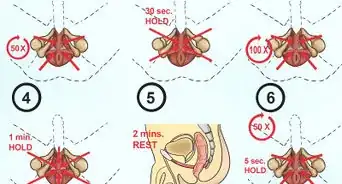

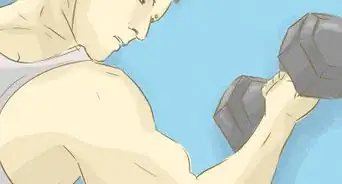
-Step-24.webp)















